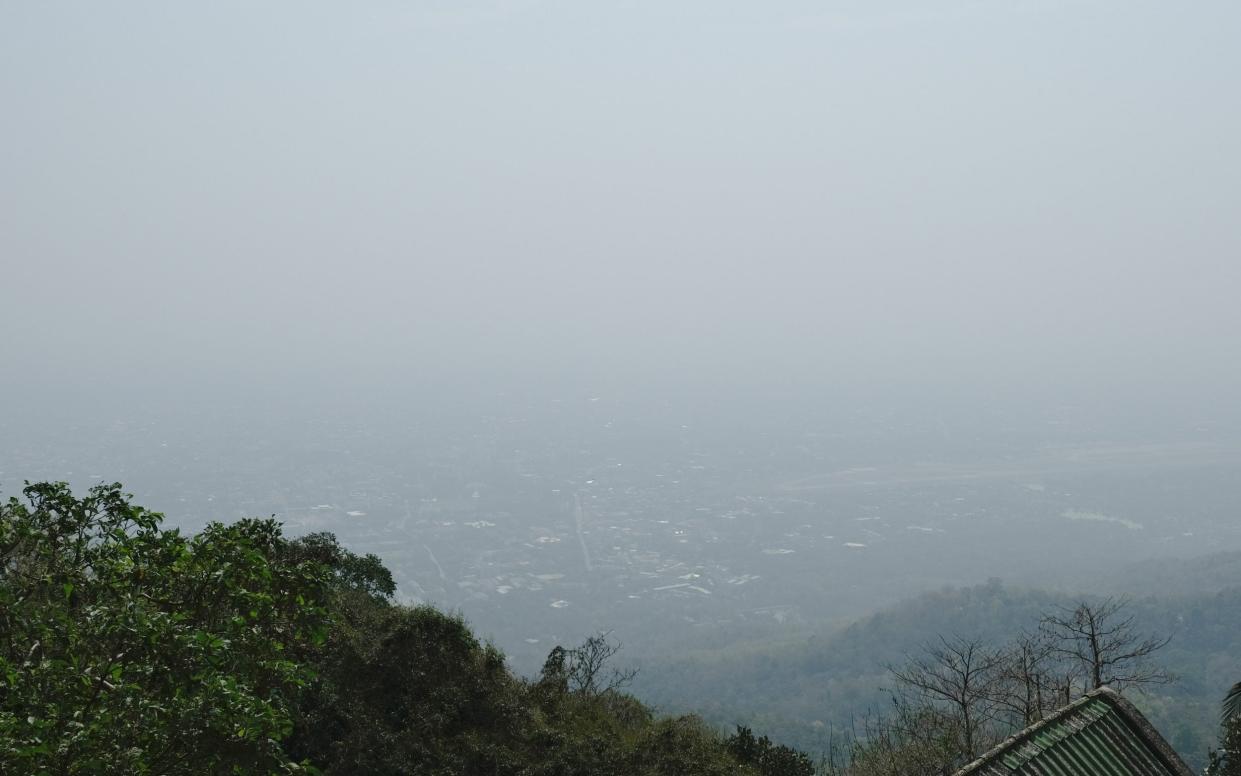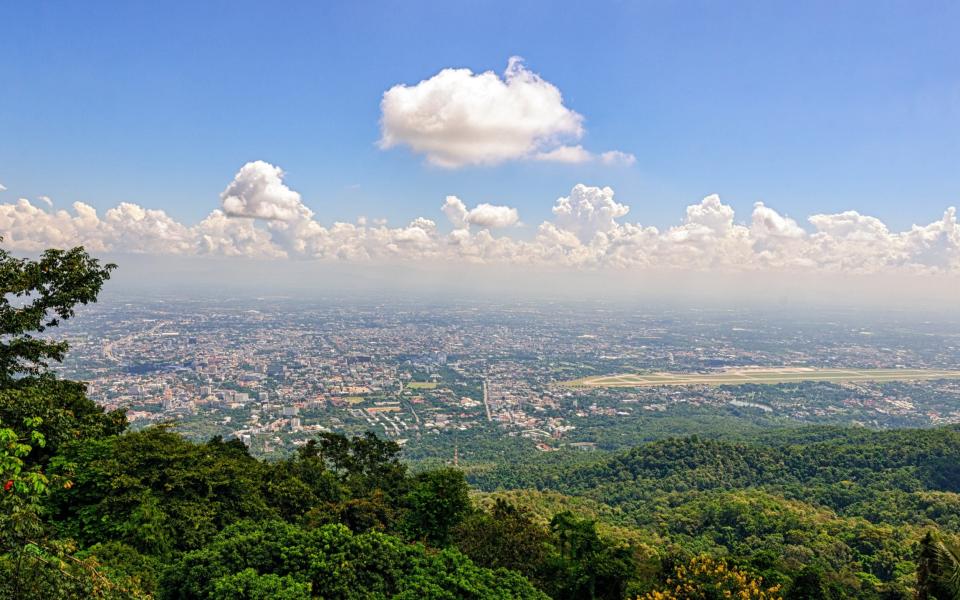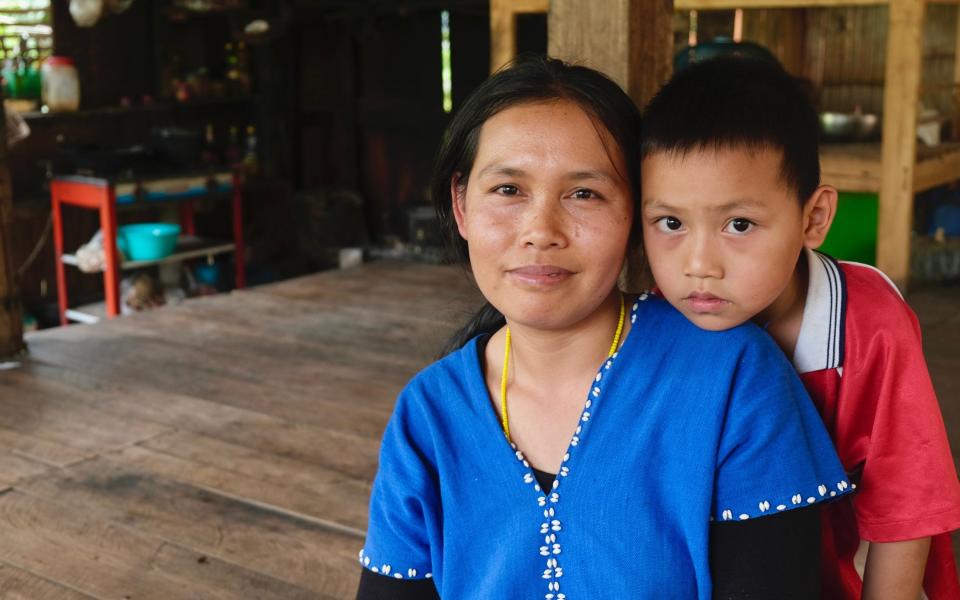The ‘blissful’ tourist hotspot that has become the world’s most polluted city

On a good day, the views from the golden temple’s ‘mountain throne’ are spectacular. But today is not a good day.
Rather than a panoramic perspective of Chiang Mai, tourists and pilgrims making the trip to Wat Phra That Doi Suthep – one of the most sacred spots in northern Thailand – gaze down at a thick layer of smog.
“The haze has been very bad this year,” says Pat, a local taxi driver, as he navigates a winding mountain pass. “I think now we have four seasons: summer, winter, rainy, and the haze.”
Each year, Chiang Mai attracts millions of backpackers and holiday-makers keen to soak up its laid-back atmosphere and explore the lush forests, mountain hikes and hillside villages nearby. The Lonely Planet describes it as a “blissfully calm” place to recharge.
But in recent weeks the tourist hotspot, which is home to 120,000 people, has been competing with megacities including Dhaka, Delhi and Shanghai for an unexpected title: the world’s worst air quality.
And on Monday, for the second time this month, Chiang Mai topped the charts.

‘Burning season’
According to IQAir, which produces an air quality index based on real-time readings from 100 cities internationally, Chiang Mai led the rankings with a “very unhealthy” 216 at noon – anything above 51 is worrying. At the same point Thailand’s hectic capital, Bangkok, stood at 80, while in Britain, Birmingham was measured at 25 and London just eight.
“In Chiang Mai, the haze is seasonal,” said Prof Chaicharn Pothirat, a pulmonary consultant and professor of medicine at Chiang Mai University (CMU). “But over the last 20 years, the intensity and duration has become worse and worse.”
While a surge in traffic and industrial development is driving pollution in Bangkok, Chiang Mai and the surrounding region is hit every year by the ‘burning season’, which generally peaks in February and March across northern Thailand, Laos and Myanmar.
Farmers – many working with major agribusinesses – use fire to clear land for the next sugarcane or rice crop cycle, while wildfires erupt in the dry forests, and some hunters burn to promote growth in certain areas. This makes it easier to track their prey, said Prasong Ranea, a retired hunter and farmer in Pa Tung Ngam, a village 60 miles north of Chiang Mai.
“Even when the government imposes zero burning [rules], people continue,” he told the Telegraph last week. “Many have no other way, they can’t afford machines or think it’s the best way to hunt.”
But experts are increasingly concerned about the health and economic consequences of the haze, and are urging political parties to change tact and put the environment at the forefront of their campaigns in Thailand’s upcoming elections.


‘I tell my patients to leave’
“As a daily practitioner, I can see that health is deteriorating – especially in the last few years,” says Prof Pothirat, in his cosy office at the Maharaj Nakorn Chiang Mai Hospital, where an air purifier is on at full pelt.
“Most people cannot afford to relocate at this time of year, but I tell my patients who are foreigners or have relatives in the south to leave to protect themselves.”
Most damaging for health is PM2.5, tiny particulate matter which has been linked to an increased risk of conditions including heart disease, strokes and lung cancer.
On Monday lunchtime, the concentration of PM2.5 around Chiang Mai hit 183 micrograms per cubic metre – five times the level deemed safe by the World Health Organization. Prof Pothirat said the “lung-breaking” surge will be deadly for some.

His research has found that every time the concentration of particulate matter PM2.5 jumps by 10µg/m³, there is a 1.6 per cent increase in non-accidental mortality in Chiang Mai. In Chiang Dao – just south of Pa Tung Ngam village and close to some of the most intense burning – excess deaths jumped by 3.5 per cent with every 10µg/m³ increase.
A separate study from 2017 estimated a 20 per cent drop in air pollution could prevent up to a quarter of avoidable deaths each year across Thailand. Meanwhile, according to government figures, 200,000 people were admitted to hospital with pollution-related respiratory issues in the week concluding March 9, and more than 1.3 million so far this year.
“We see more serious health problems in Chiang Mai at this time of year,” Prof Pothirat says. “But the government, politicians, they also have the idea that PM2.5 air pollution just comes temporarily, that it’s a short term problem. And they underestimate the future health effects.
“Young, healthy people might notice fewer health impacts straight away, but PM2.5 increases inflammation, impairs lung function. In the next [few] years or in a decade, they’ll be sicker than they would have been with clean air … it’s taking time from their life expectancy.”


‘Bookings fell by 50 per cent’
There’s also a strong business case to tackle pollution, added Dr Witsanu Attavanich – an environmental economist at Kasetsart University in Bangkok, and co-founder of the Thai Clean Air Network advocacy group.
“Air pollution makes people get sick, and they then have to spend money on healthcare,” Dr Attavanich says. “But there’s an opportunity cost too – businesses lose money when people stay at home to avoid the pollution, people can’t work when they’re unwell, productivity drops.”
He cited research estimating that in 2019, PM2.5 pollution alone cost Thai households 2.17 trillion baht – equal to around 11 per cent of gross domestic product.
In Chiang Mai, there are mounting fears the city’s smokey reputation will deter visitors. Earlier this month the president of Chiang Mai’s Tourism Industrial Council, Pallop Saejiew, told the Bangkok Post that although widespread cancellations are yet to be reported, companies specialising in outdoor activities have seen reduced demand.


“At the start of March, it was a problem – tourists were not coming, I would say I had a 50 per cent drop in bookings,” says Mr Tee, owner of Chiang Mai Tee Tours, perched in his booth on a sidestreet in the city’s old town. “I [have] worked in tourism for 30 years… and I think tourists are becoming more aware of the pollution.”
Still, some argue that the negative headlines are unfair, especially as the world’s most polluted places do not always share data. Air quality sensors used internationally also vary, as do their placement, which could skew the measurements.
“There’s a perception Chiang Mai is an apocalyptic hellscape – it’s not,” says Dr Mark Ritchie, executive director of International Sustainable Development Studies Institute, based in the city. “Overall Bangkok is much more polluted, it’s only at this time of year that Chiang Mai has a lot of smoke – even then, it’s gone when there are big storms.
“Air pollution is a national issue, not a Chiang Mai issue… and the biggest problem in Thailand is not burning but traffic, industry, and massive urban development.”
‘We’re still suffering’
Still, few dispute that northern Thailand has a major problem, and public frustration is mounting. As a thick yellow haze engulfed Chiang Rai on Monday, a city three hours north of Chiang Mai, close to the border with Myanmar, protesters rallied outside the district office to call for more action.
Experts, too, are frustrated at the slow progress tackling air quality under the current government – especially the failure to pass a Clean Air Bill in parliament, which is seeking to create a dedicated agency to tackle the problems and introduce higher taxes and penalties on major polluters.
Many are also disappointed that no political party has chosen to put it at the forefront of their ongoing election campaigns, with Thailand set to go to the polls on May 14.
“Politicians need to take more action,” says Dr Somporn Chantara, head of the Environmental Science Research Unit at CMU. “It might be said that the government has done a few good things, but it’s clearly not been successful yet because we can all see that the pollution is still here. And we’re all still suffering.”
Dr Chantara’s team at CMU have been working with a network of partners on projects to mitigate the health ramifications of burning – including vending machines for free N95 masks on campus and the creation of ‘green zones’ fitted with air filters and purifiers at some nurseries and hospitals.



“I’ve always been worried about the impact on my son – when you breathe the haze, over time it accumulates. You can feel it,” says Sunaree Khamlaa, a villager in Pa Tung Ngam, where the small kindergarten is dust free. “So I was relieved, I hope it helps.”
CMU and other NGOs are also working with farmers to encourage alternatives to burning and use technology to better track fires so firefighters can rapidly respond, before fires become too large.
But Prof Pothirat warned that the government’s approach has been largely reactive, not proactive. Recently in Chiang Mai, for instance, local officials urged residents to avoid outdoor activities, temporarily closed several national parks due to fires, and handed out face masks because of the pollution threat.
“They were trying to calm people down, but none of this solves the root causes of haze,” he says, suggesting initiatives such as financial incentives for farmers who don’t use fire should be expanded.
“To really solve the problem, Thailand needs a bigger budget, tighter laws and more monitoring of the private sector,” adds Dr Attavanich. “And reducing the haze means also working with our neighbours. But we should not have to fight this hard to breathe.”
Protect yourself and your family by learning more about Global Health Security

 Yahoo News
Yahoo News 
